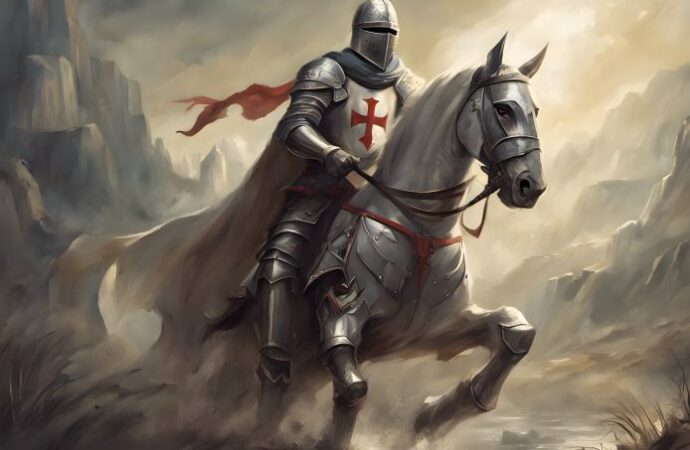Welcome to the conclusion of our series about secret societies!
In this final chapter, we’ll reveal the mysteries of the Skull and Bones, the Order of the Golden Fleece, and the Knights Templar. These organizations have played significant roles in history, and their stories are as fascinating as they are mysterious!
The Skull and Bones
Skull and Bones, a secret society founded in the 19th century at Yale University, has captured the imagination of many due to its aura of secrecy and the prominent figures it has produced. However, it’s crucial to demystify this organization beyond the sensationalized portrayals often found in popular culture and conspiracy theories. At its core, Skull and Bones is primarily dedicated to fostering fellowship and camaraderie among its members.
While Skull and Bones’ activities remain cloaked in secrecy, their focus leans more toward personal and professional development rather than nefarious plots or hidden agendas. The society selects a small group of undergraduates each year, offering them a unique opportunity to form lasting connections with fellow students who often go on to hold influential positions in various fields. The bonds forged within the society provide members with a supportive network throughout their lives, facilitating personal growth and success.
The society’s rituals and traditions serve as a rite of passage for its members, reinforcing the sense of brotherhood and shared values. While outsiders may speculate about the significance of these practices, they are central to the society’s mission of building lifelong relationships and fostering personal growth. Skull and Bones exemplifies how collegiate secret societies can play a role in shaping the lives of their members, often extending their influence well beyond the hallowed halls of academia.
The Order of the Golden Fleece
The Order of the Golden Fleece, a beacon of chivalry and honor, emerged from the shadows of history in the 15th century with a mission like no other. This illustrious secret society,was established by visionary Duke of Burgundy, Philippe le Bon.
What set this order apart was its noble purpose — it harbored no concealed agendas or secret plots. Instead, it was a bastion of chivalry, a realm where honor and virtue reigned supreme. For Philip, this order was more than just a symbol; it was a means to unite European nobility under the banner of camaraderie and loyalty.
Embracing the winds of change brought by the Renaissance and a revived fascination with the treasures of classical antiquity, Philip chose a symbol that would resonate through the ages: the golden fleece. Inspired by the legendary Greek myth of Jason and the Argonauts, this emblem became the beating heart of his nascent order. The Order of the Golden Fleece, bathed in the radiance of its symbol, became a testament to the enduring spirit of chivalry and the pursuit of honor in a world veiled in secrecy. The order experienced its heyday during the late Middle Ages, when it was closely associated with the Burgundian and Habsburg dynasties.
The decline of the order began in the 18th century as the Enlightenment and changing political landscapes in Europe led to a decreased emphasis on chivalry and aristocracy. During the French Revolution, many of its members faced persecution, and the order’s activities were disrupted.
In the 19th century, the order experienced a revival of sorts under Emperor Franz I of Austria, who sought to reinvigorate its traditions. However, the order’s influence and significance had waned considerably by this time.
The order continued to exist into the 20th century, with various European monarchs and heads of state holding memberships. It was also used as a dynastic order within the Habsburg family.
The fate of the Order of the Golden Fleece varied from one country to another. In some cases, it fell into abeyance, while in others, it continued as a symbolic institution with limited influence.
Today, the order still exists in some form, and there are occasional ceremonial events and gatherings of its members. However, its role has evolved into that of a historical and symbolic order rather than a significant political or chivalric organization. Its rich history and legacy continue to be celebrated and remembered as part of Europe’s cultural heritage.
The Knights Templar
The Knights Templar, while often associated with secrecy and mystique, were originally a medieval Christian military order rather than a conventional secret society. Founded in the early 12th century, their primary mission was to protect Christian pilgrims traveling to the Holy Land during the time of the Crusades. They played a pivotal role in the defense of Jerusalem and other key territories in the Holy Land.
What set the Knights Templar apart from other military orders of their time was their unique combination of military prowess and financial acumen. Over the years, they established a sophisticated financial network and banking system, which allowed them to amass immense wealth and power. Pilgrims and nobles alike entrusted them with their assets, and the Templars issued letters of credit, effectively serving as a medieval banking institution.
This accumulation of wealth and influence eventually became a double-edged sword for the Knights Templar. As their financial power grew, so did their political influence. This rise to prominence garnered the attention of both secular and ecclesiastical authorities. Some monarchs and religious leaders grew wary of the Templars’ financial independence and influence over the Christian world.
In the early 14th century, King Philip IV of France, facing severe financial difficulties, sought to eliminate his debts and exert more control over the church and the Templars. He orchestrated a campaign against the order, leveling accusations of heresy and corruption. In 1312, under pressure from King Philip IV and the Pope, the Knights Templar were officially disbanded and their assets seized.
The downfall of the Knights Templar serves as a cautionary tale about the perils of amassing too much wealth and power in a medieval society marked by shifting alliances and political maneuvering. While they were not a secret society in the traditional sense, their story is a testament to how organizations can rise to great heights and then face swift and dramatic falls from grace, often as a result of political intrigue and power struggles. The Knights Templar’s legacy lives on in the annals of history, remembered for their unique role in the medieval world and the mysteries that still shroud their order today.
As we wrap up our expedition through the enigmatic realm of secret societies, we hope that you’ve unearthed fresh insights into these mysterious enclaves! From the enigmatic Freemasons and the clandestine Illuminati to the storied Knights Templar, each of these enigmatic groups has etched a distinct legacy into the annals of history, offering a compelling testament to the world’s enduring fascination with the unknown!

























